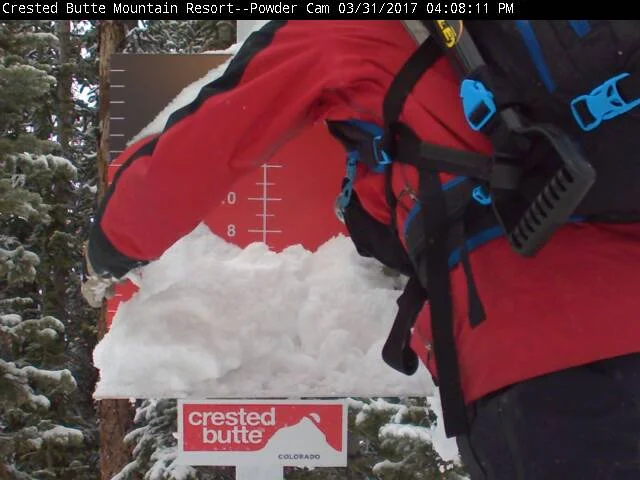April Fools' prank on Crested Butte stake cam didn't fool SnowCAP users thanks to some robust coding safeguards.
Designing algorithms for computer vision can be daunting. Hell, designing algorithms for anything is tricky enough - you have to think of every possible scenario and exception, then code a loophole for them so when exceptions happen, and they will, your whole system doesn't error out.
For SnowCAP, our ski snow texting platform, we saw it all in our first season: people climbing up to the snow stake for a selfie, toy paratroopers and snakes thrown on the stake, total white out conditions, icicles on the cam lens, buried stakes, ski patrollers cleaning, even constructing new stakes, and arguably most frequent of all - impromptu snowmen built on the platform.
But perhaps one of the most unique exceptions we've seen this season is likely someone at Crested Butte playing an April Fools' prank by stacking up the snow on the stake in a window of only three minutes. How do you code against that?
Turns out we already did! Even I, as a human, was fooled by it since the pranker was quick enough to stack between vid captures. The animated gif that we send out looked fine so I tweeted it. Our algorithm wasn't fooled however. Without going into too much detail about SnowCAP's secret sauce, we have code baked in that compares against historical snowfall for every frame.
Cassandra Clare tells us the best lies are based in truth. Also true with pranks, the snow total looks that much more real because of the actual powder covering up the placed snow pack. SnowCAP wasn't fooled and never went above 2 in - the actual snowfall for that day.
We put this safeguard in to protect against sending text alerts out if, say, some snow fell from the branch of a tree or a skier taking a tight turn in proximity of the stake blasted it with powder. SnowCAP will see the sudden "unrealistic" dump and think one of two things: either we have a historically record-rate of snowfall, or something's not quite right. "Either way, I need others to check me before I text, Tweet, and Facebook the world about what I'm seeing."
Our friendly neighborhood ski patroller arrives to restore order.
I was fooled because the pranker did it while it was still snowing pretty heavily which worked perfectly to cover the packed snow chunks quickly, making it look like new-fallen snow to an (human) observer. Plus it was Friday, I had just gotten to happy hour, and it was March 31st. Sufficed to say, I wasn't thinking about April Fools' pranks. But that's why/how they fool us... humans anyway.




